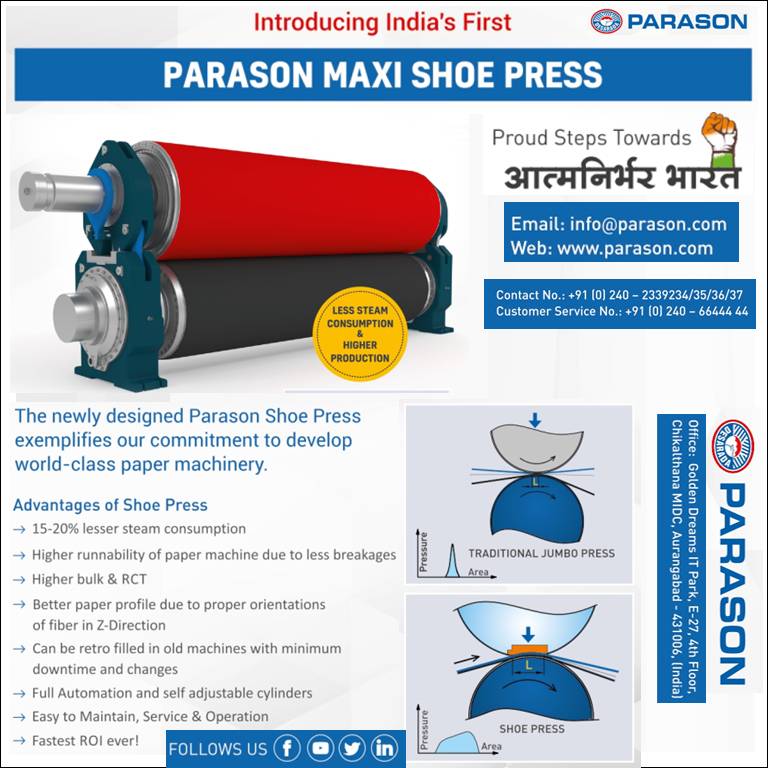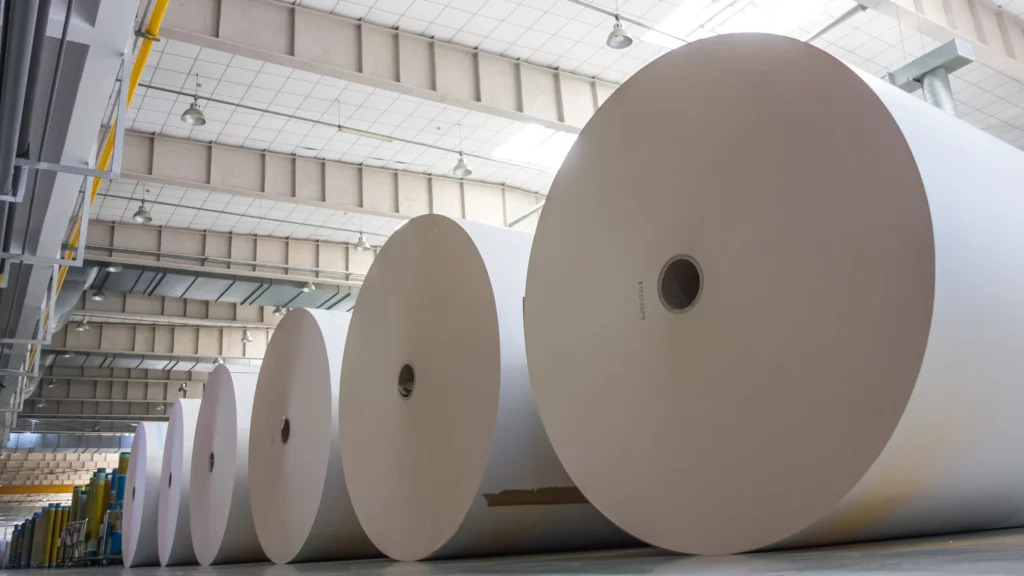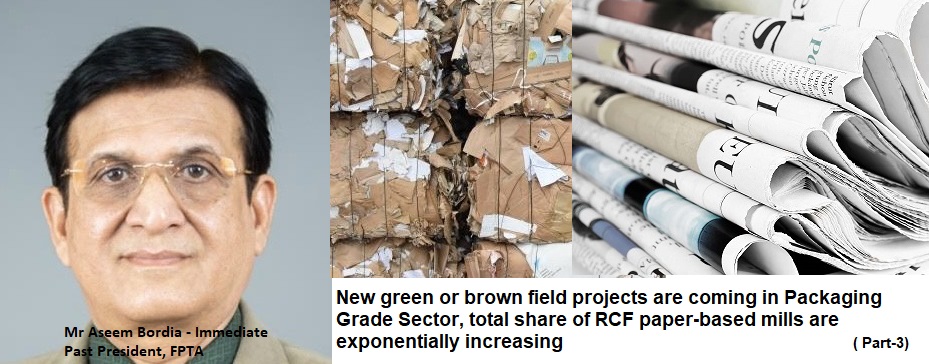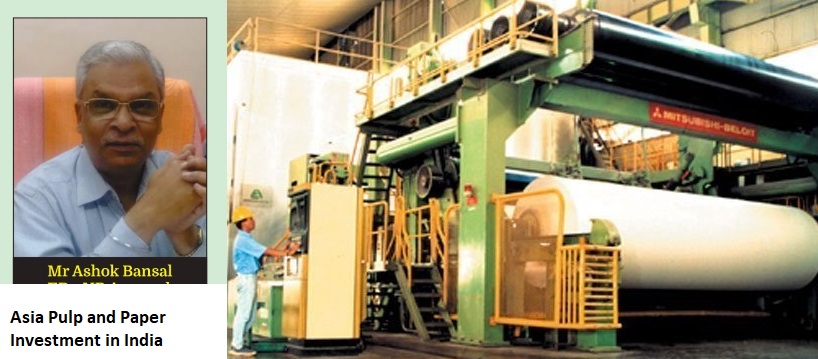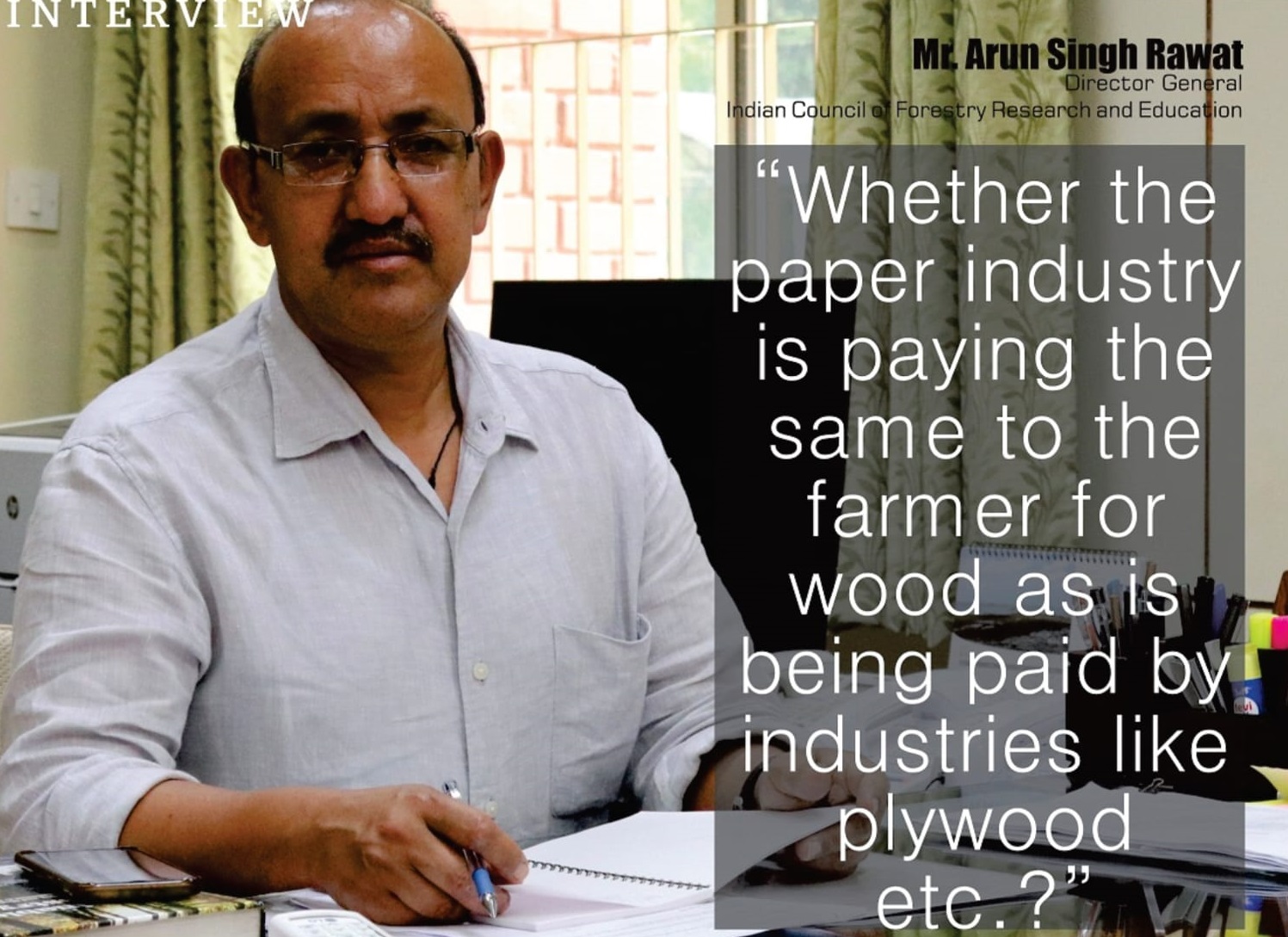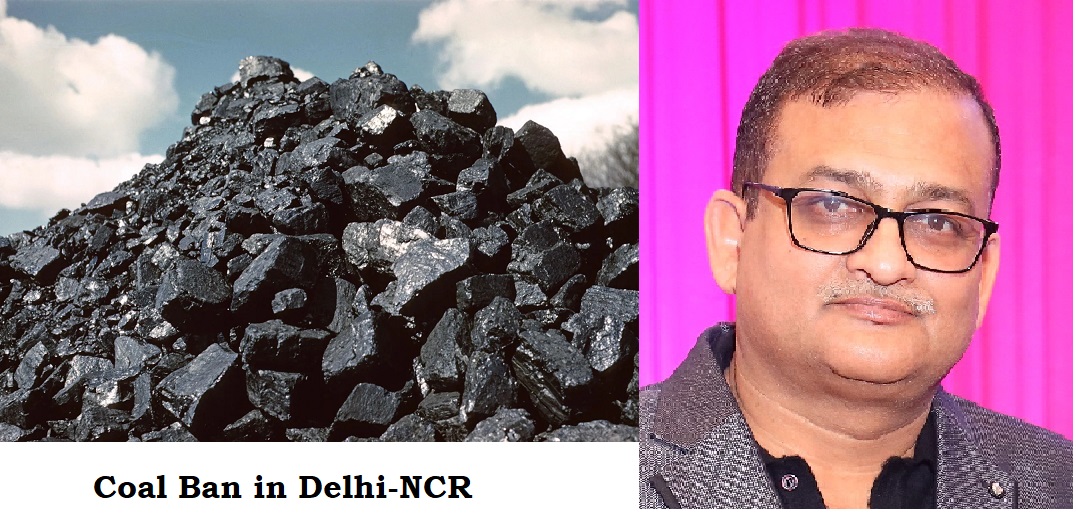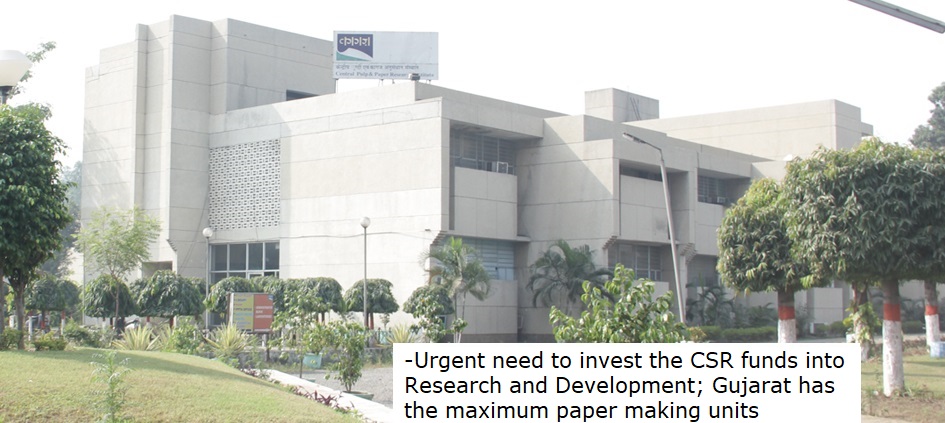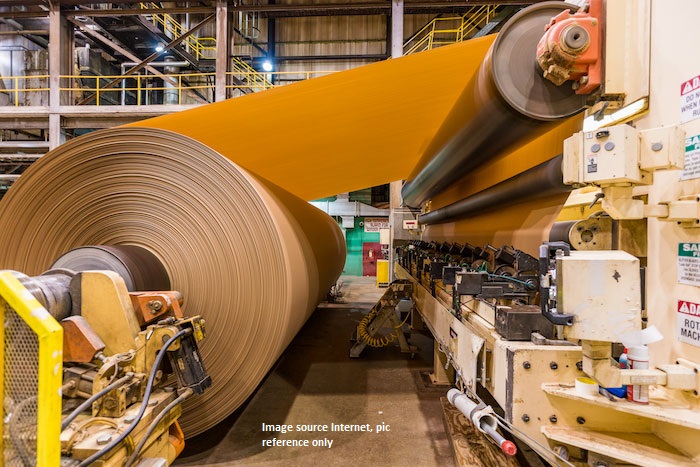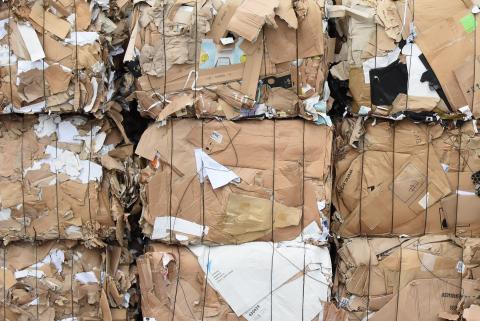Recycled vs. Virgin: Recycling Paper saves about 33% more energy, reduces wastewater and solid waste by nearly half
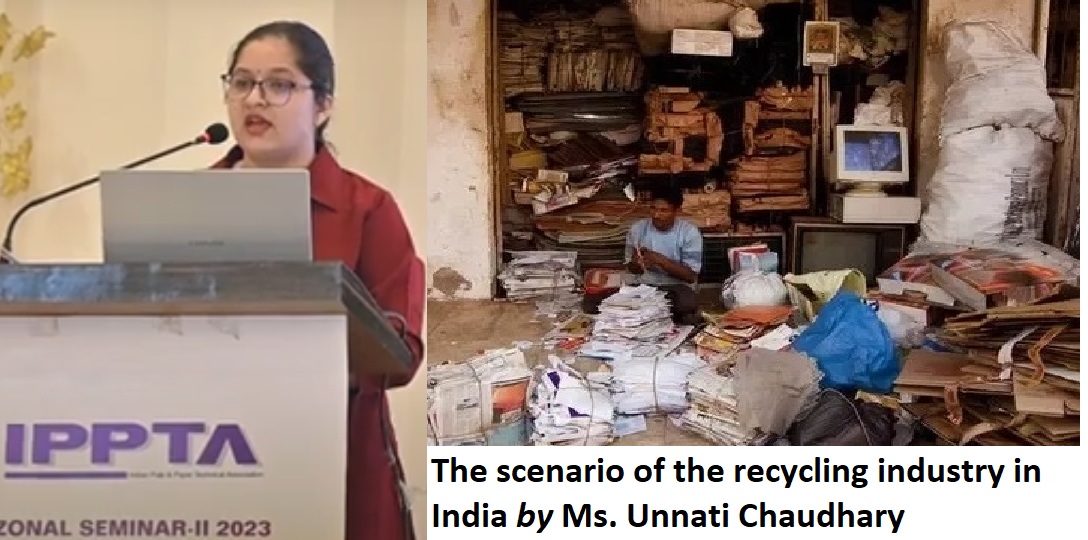
Recycled vs. Virgin: Recycling Paper saves about 33% more energy, reduces wastewater and solid waste by nearly half
-Recycling in India has plethora of opportunities, says Ms. Unnati Chaudhary
-The automated or AI-based systems and Innovations will improve the economic viability of the recovery process
Ms. Unnati Chaudhary discusses the current scenario of the recycling industry in India. She shares her views on the opportunities and challenges in the industry, along with measures to counter the same.
The Pulp and Paper Times:
Speaking at the IPPTA Zonal Seminar in Muzaffarnagar, Ms. Unnati Chaudhary from Forest Research Institute, Dehradun said, "I believe that the solutions to the most complex problems are obtained through collaboration, dialogue, and exchange of ideas. We will shed light on the landscape of paper recycling in India and navigate through the current scenario by examining the challenges we face, and how we can make a difference."
She added, "India is the fourth largest paper producer in the world, and produces over 24 million tons annually, which makes around 5.7% of the total paper and paperboard production of the world. Surprisingly, a lot of it goes to waste. The per capita consumption of paper in India is low compared to developed countries, which are at 15 kgs, and most of the production is from recycled paper. The ramifications of urbanization are more severe in developing countries where Waste Management has become a mammoth task. The dual challenges of waste management and increasing resource requirements can be met through recycling."
"India witnesses remarkable growth of paper consumption with increasing population and expanding Industries, the demand for paper will gradually increase. Consequently, higher consumption will lead to a significant amount of paper waste that has to be recovered, recycled, and converted into paper and paper products. Currently, India generates around 1.45 lakh metric tons of solid waste, about 35% of which is dry waste, and of that 35%, 21% is paper and cardboard waste, and accounts for about 7.4% of the total municipal solid waste. There is a need for regulatory infrastructural government and citizen-centric interventions in paper waste collection, sorting, processing, and recovery."
Sharing the advantages of recycling waste paper, she added, "Firstly, it requires less technology, which leads to limited exploitation of Natural Resources. It can benefit environmentally, by using recycled grade paper, we can save about 33% more energy and can reduce the generation of wastewater and solid waste by 49% and 39%. It can even reduce the greenhouse gases released in the air by 37%, compared to virgin paper. India faces a challenge of Waste Recovery, which stands at 25 to 28% compared to the global average of 58%, it is due to the abysmal state of the collection, sorting, and grading system. In the market-level consumption and paper disposal, we witness an 80% reduction coming from waste paper, about 13.6% is wood-based, and only about 6% is from Agro residues. From the consumer Market, only 30% of waste paper collected goes back into the system. Of the total demand of 20 million tons, about 60% (13 million tons) of the waste paper domestically collected, and imports 7 million tons. The majority of the recycled fibers are used in the production of packaging grade, around 20% for the production of writing in printing paper, and 15% for the production of newsprint."
“The waste paper collection mechanism in India has three important elements, an unorganized collection system, the direct and indirect sources, and pre-consumer and post-consumer waste. The collection system is mainly unorganized it is in the hands of unorganized collectors and distributors. Over 95% of the collection system is unorganized. The sources are either direct or indirect. In the present mechanism the waste collectors collect waste from various sources and send it to a Common Center called the primary sorting Center. Then the waste goes to the zonal segregation centers which are owned by wholesalers, from where the waste is sorted and dispatched to the end users,” she added.
Speaking about the challenges faced in paper recycling in India, she said, “Due to the unorganized collection system, the recycling rate is low in India compared to the global average. Another challenge is the contamination and segregation issues of the recycled fiber. The waste paper consists of various contaminates like hot mill glues, adhesives, and staples hampering the paper-making and recycling process. In addition to that, they also degrade the quality of the end product. The third challenge is the lack of formalization. A multitude of stakeholders involved in the collection of waste paper make it an unsystematic system, and therefore, there is a need for reorientation of the system into a more organized manner."
She added, "Implications of technological obsolescence are evident from the quality of the end product and lower economies of scale. The current manual sorting method is time-consuming and needs to be changed. Lastly, infrastructure gaps, the low percentage of recovered paper demonstrates that the existing institutional mechanism is weak, and leads to considerable leakages in the system."
Sharing measures to battle the challenges, she said, "There exists a plethora of opportunities and potential changes in the current system, for instance, launching public awareness campaigns to educate citizens about the importance of paper recycling and proper waste segregation at source. Latest recycling technologies and innovations can improve the efficiency and quality of recycled paper. The automated or AI-based systems and Innovations will improve the economic viability of the recovery process. Integration of the informal sector and government can improve efficiency and working conditions. Consolidation with international organizations can help in adopting better practices. The fourth one is circular economic integration, which can help benchmark sustainability. The last one is having policy guidelines and directives to help bring a positive change."
Concluding her comments, she added, "India has a complex paper recycling scenario, but it has both challenges and opportunities. Substantial efforts towards recovery and recycling are needed to counter the growth in paper consumption. A combination of robust policies coupled with effective all-round implementation, adoption of the latest technologies, circular economy principles, and increased public awareness is the need of the hour."
Web Title: Recycled vs. Virgin: Recycling Paper saves about 33% more Energy, reduces wastewater and solid waste by nearly half




 Join WhatsApp Group
Join WhatsApp Group Join Telegram Channel
Join Telegram Channel Join YouTube Channel
Join YouTube Channel Join Job Channel (View | Submit Jobs)
Join Job Channel (View | Submit Jobs)



